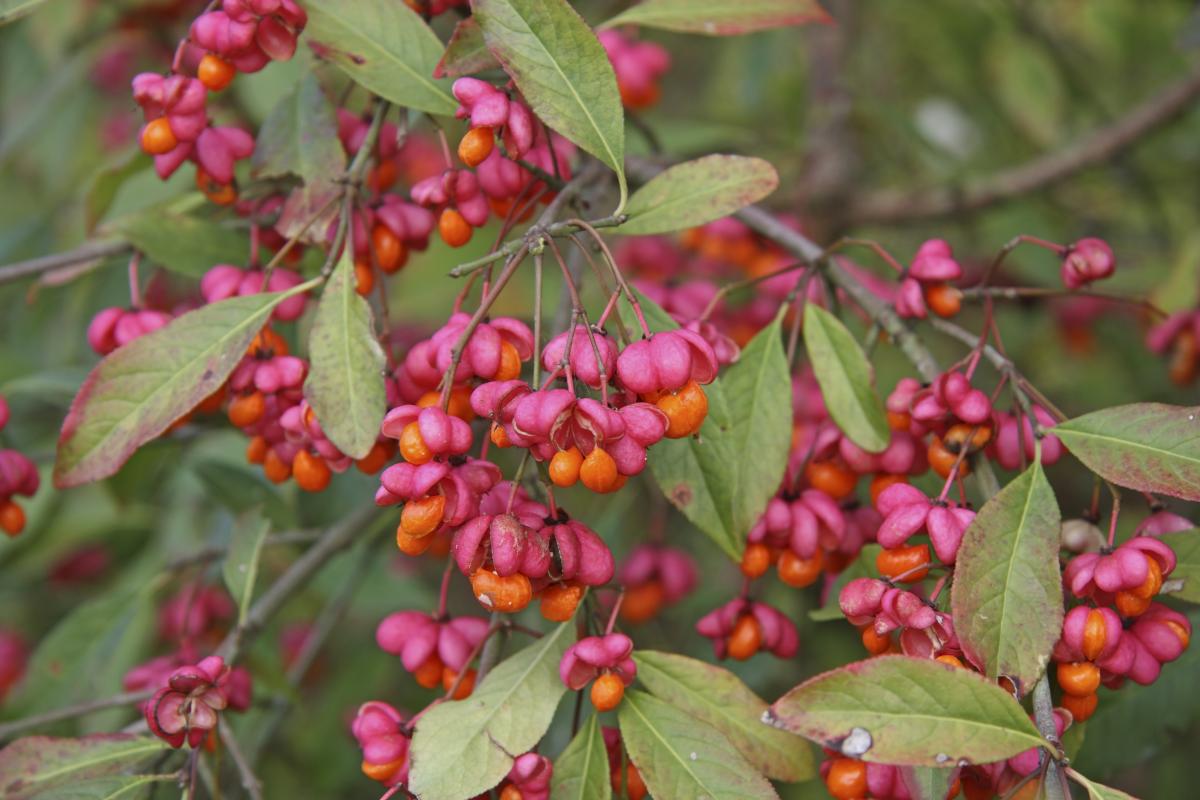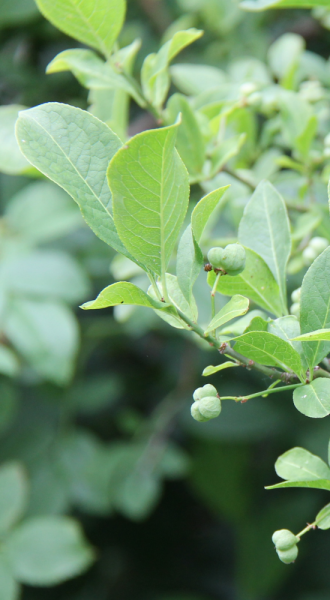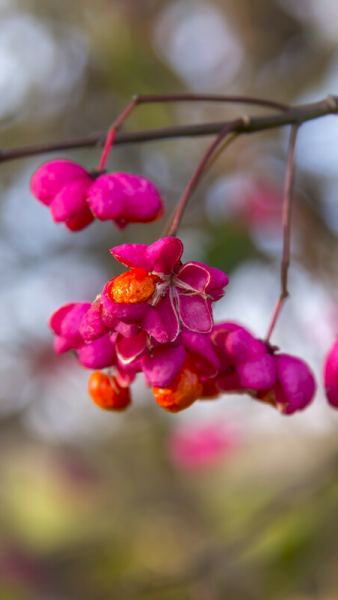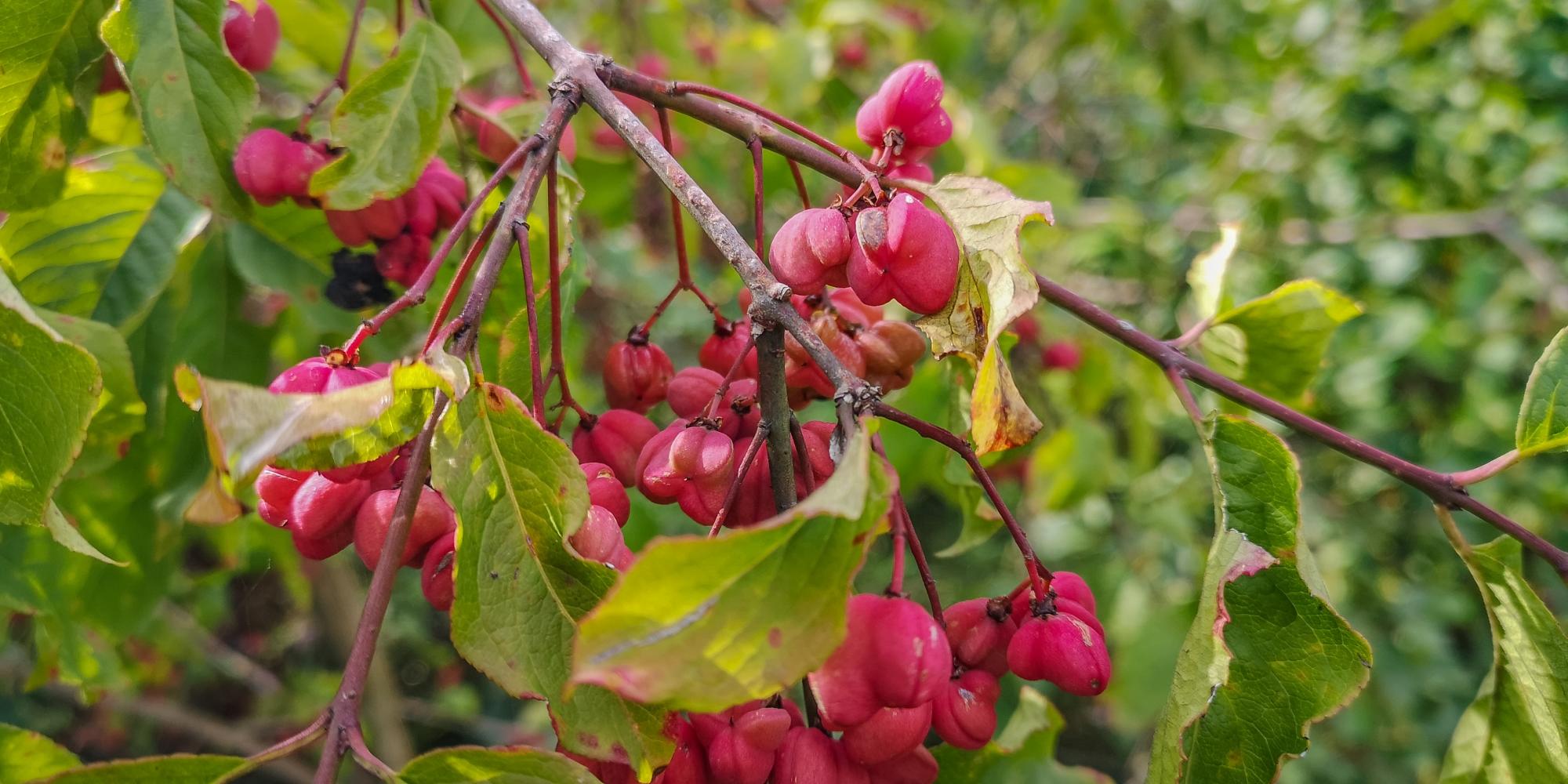
Species Name: Euonymus europaeus
Spindle is a small deciduous tree that stands out in the autumn when its bright pink and orange fruits appear on its green stems. These brightly coloured fruits attract many birds.
The spindle is a many-branched shrub with pale brown-grey bark and green twigs. The twigs are angled with flat faces and have small buds that are pale green with red-brown scale margins in opposite pairs.

The leaves are 8cm in length with minute sharp teeth along the edge, shiny, waxy and hairless.

The flowers grow in small clusters, each having four cream-coloured petals. The fruits are bright pink with orange seeds looking similar to popcorn.

Spindle can be found across Europe. It can be seen in the Forest along the woodland edges and hedgerows in chalky and limestone soils. It is also an ancient woodland indicator.
The spindle’s Latin name ‘Euonymus’ means lucky - ironic as the berries and leaves are toxic. It is also believed that when the spindle flowered early it was a bad omen for the plague.
Spindle has many uses including being used to make spindles in the wool industry, as well as for artistic charcoal and in gunpowder. It was also used for carving and to make knitting needles and toothpicks.
The flowers provide pollen and nectar for many insects, and the leaves are an important food source for caterpillars such as the spindle ermine and the holly blue butterfly. Aphids are also attracted to spindle trees and are often found on them along with their predators such as ladybugs and hoverflies.
It is susceptible to spider mites and vine weevils which can cause the tree to dieback.
2% of the trees we are planting in the Forest this season are spindle trees.




